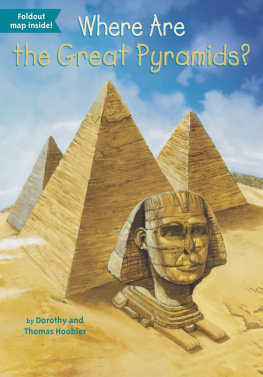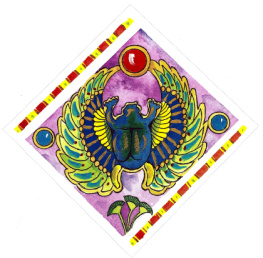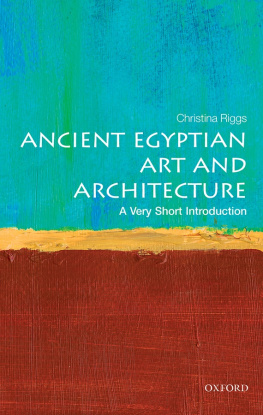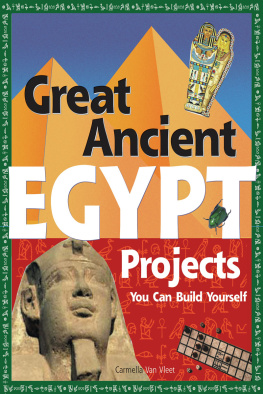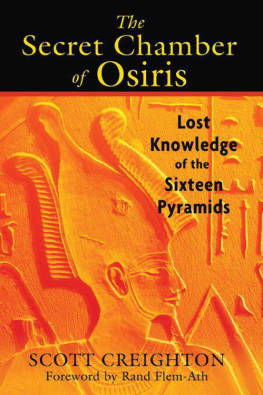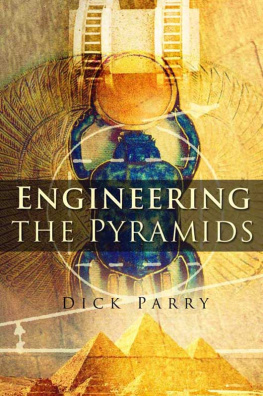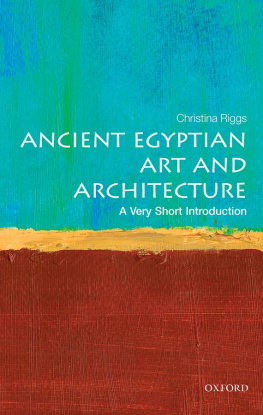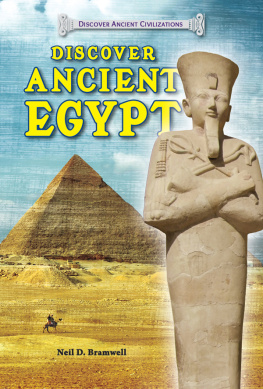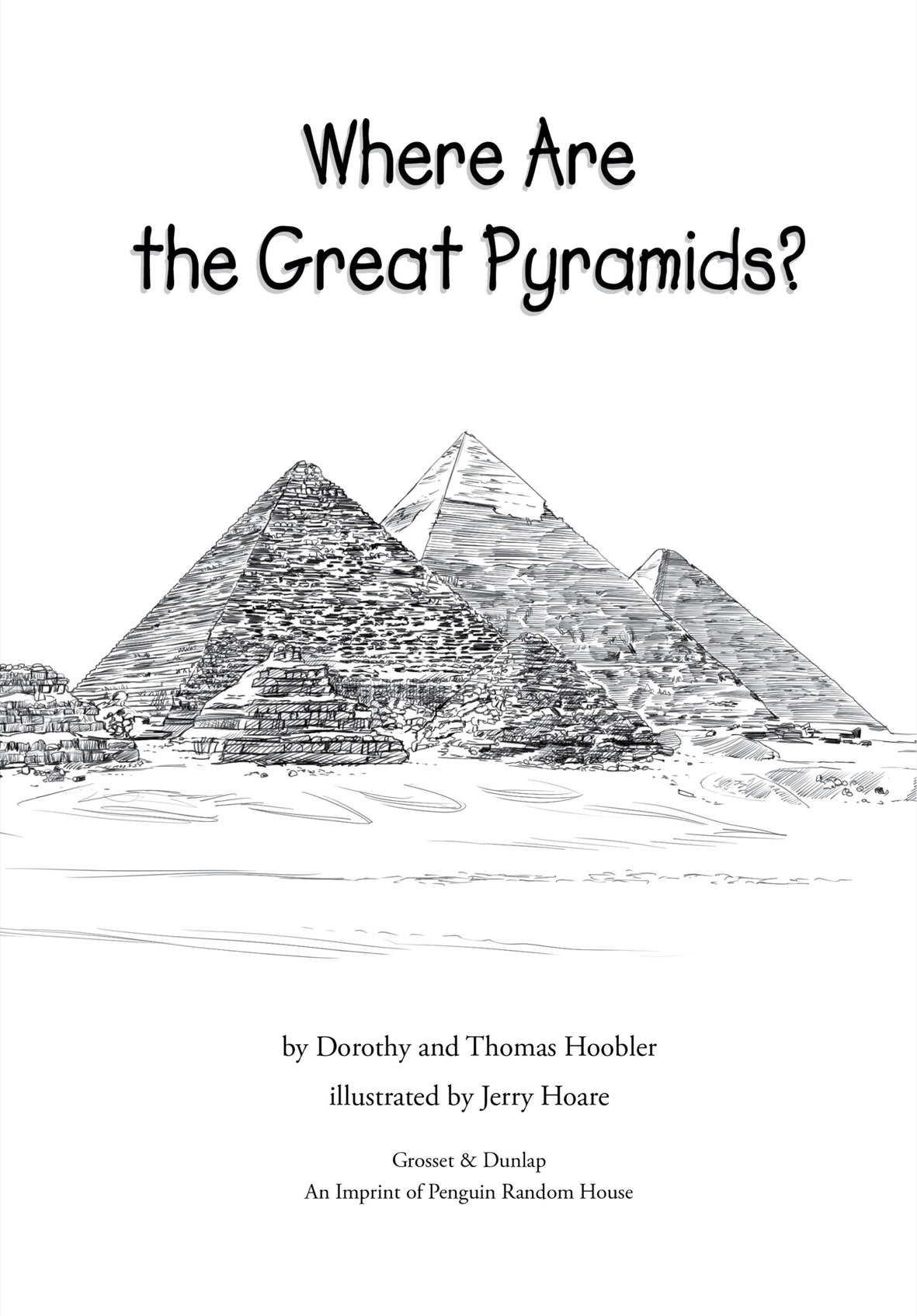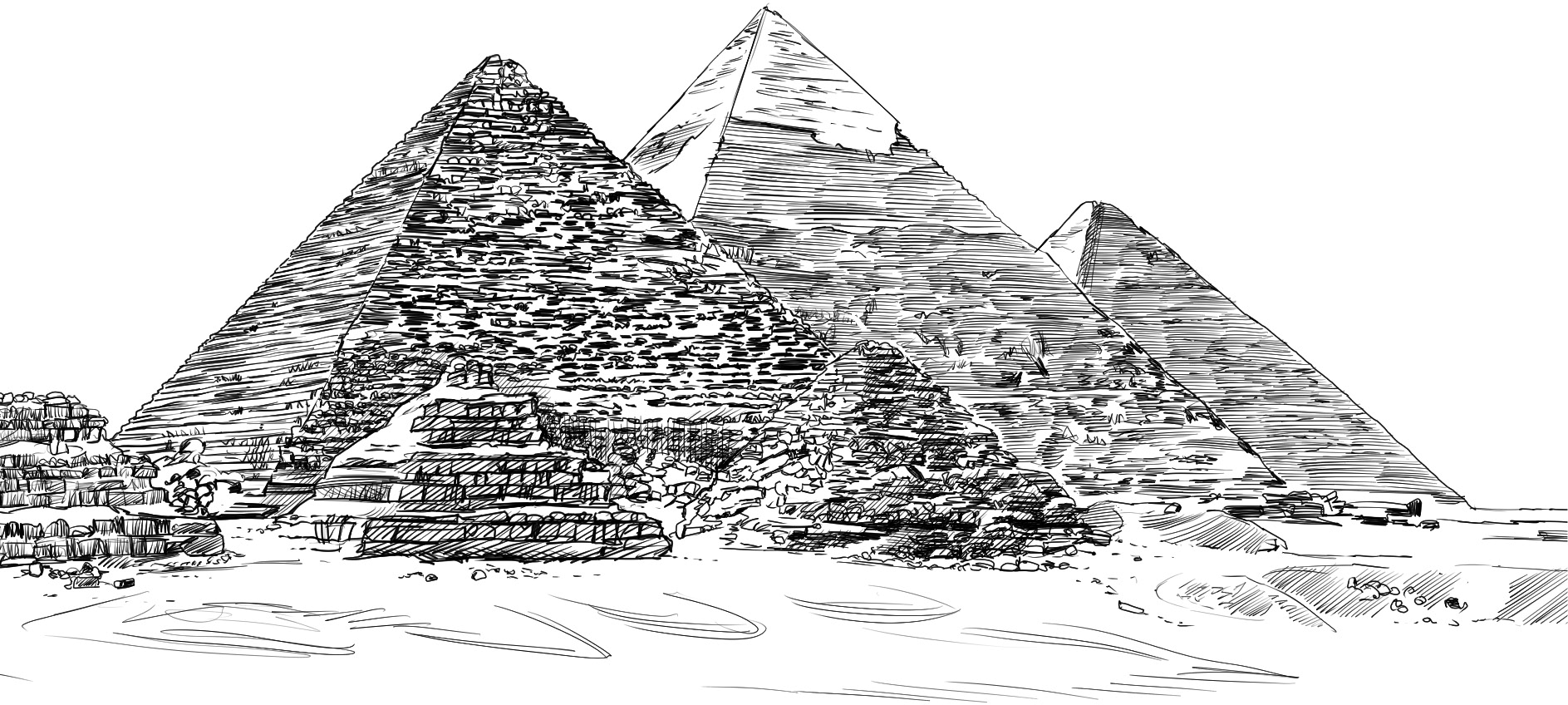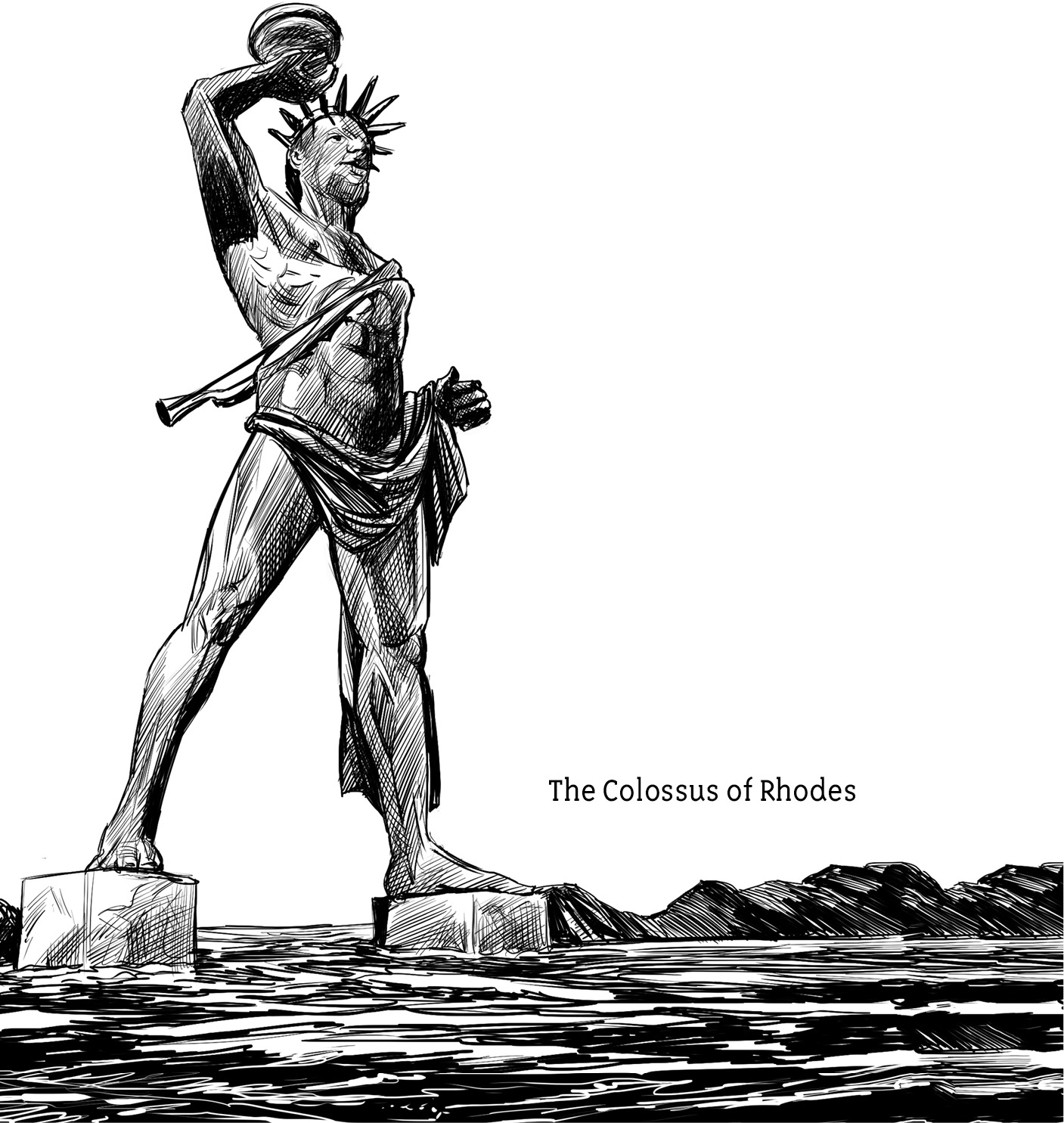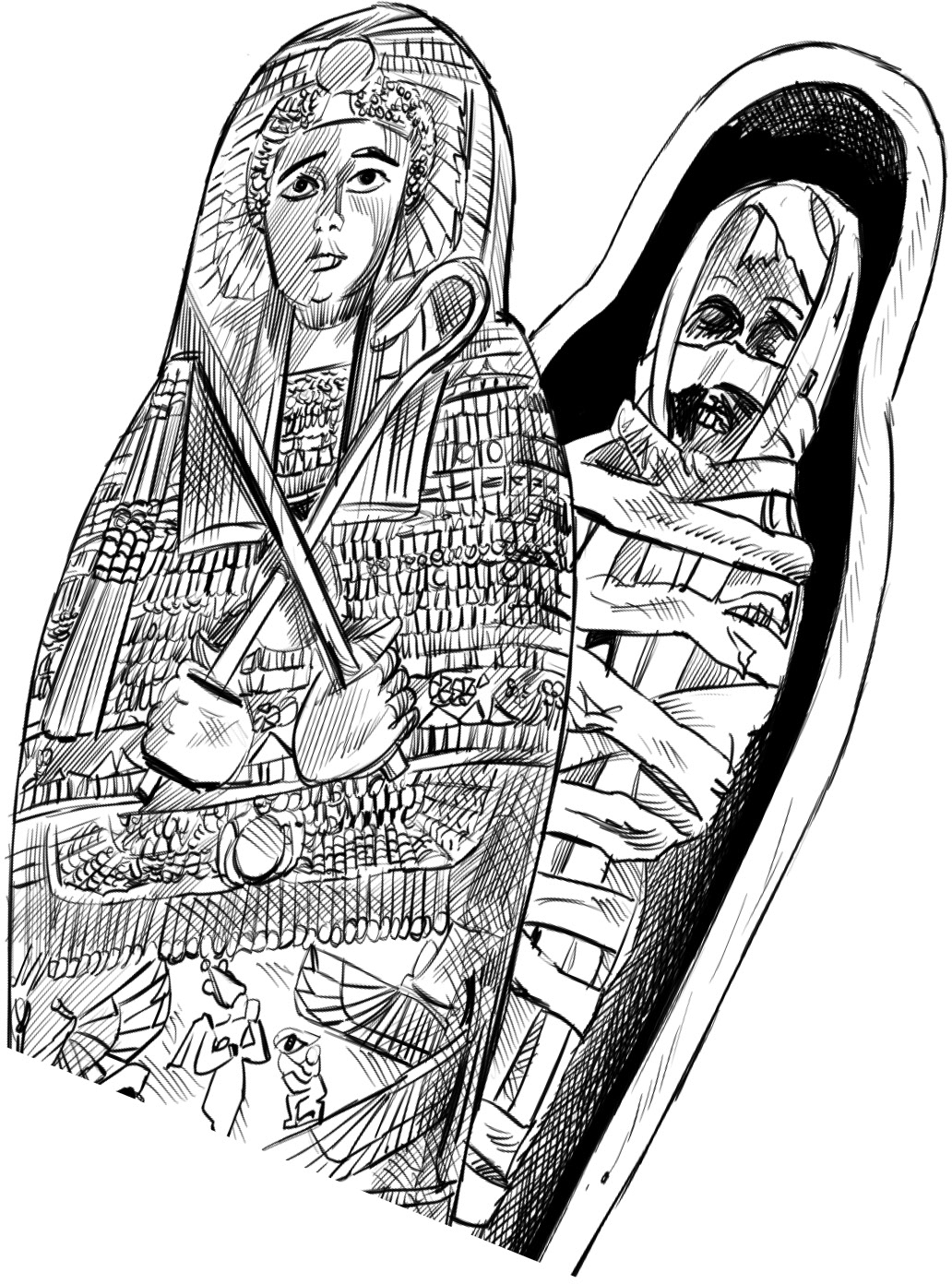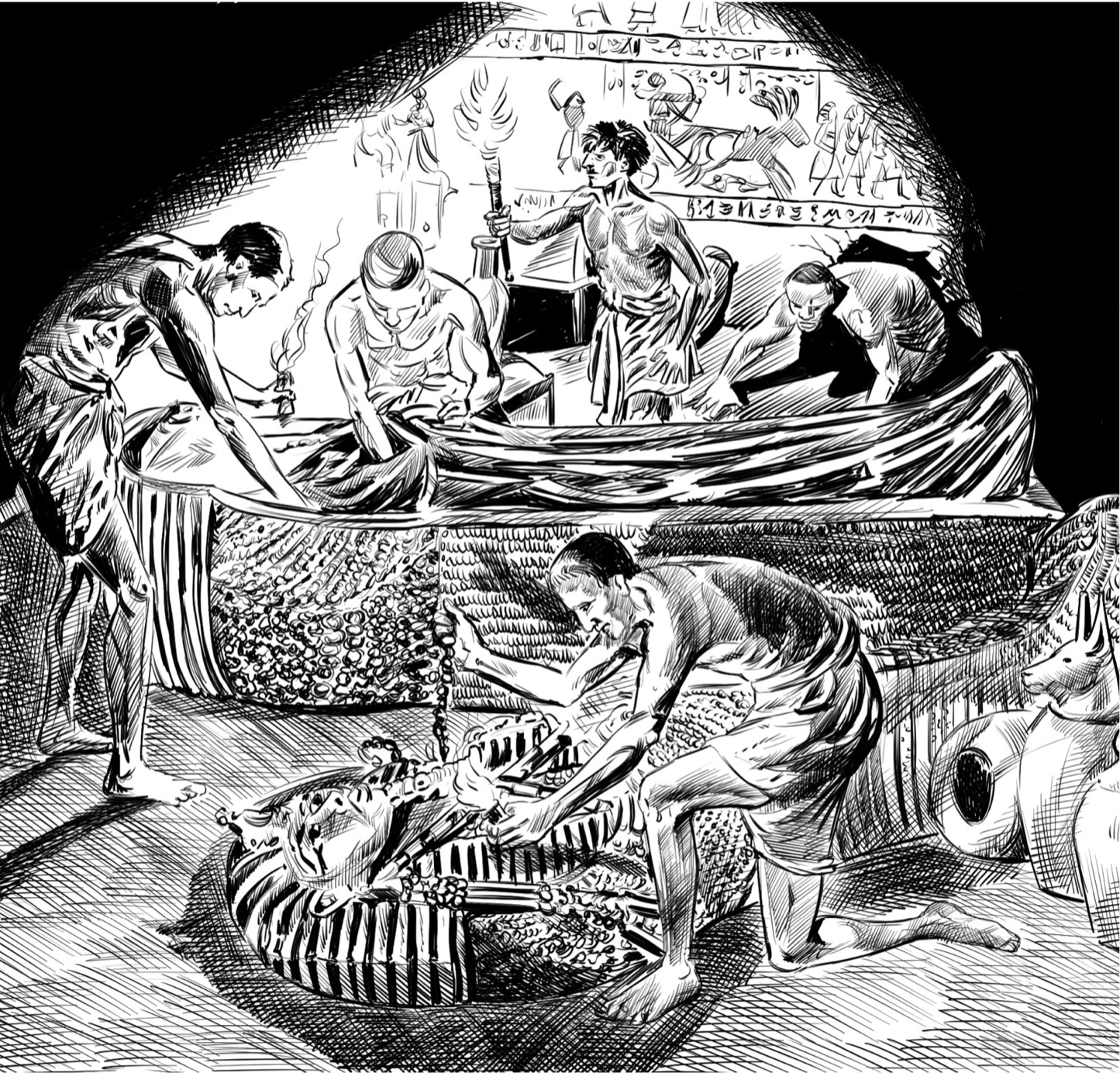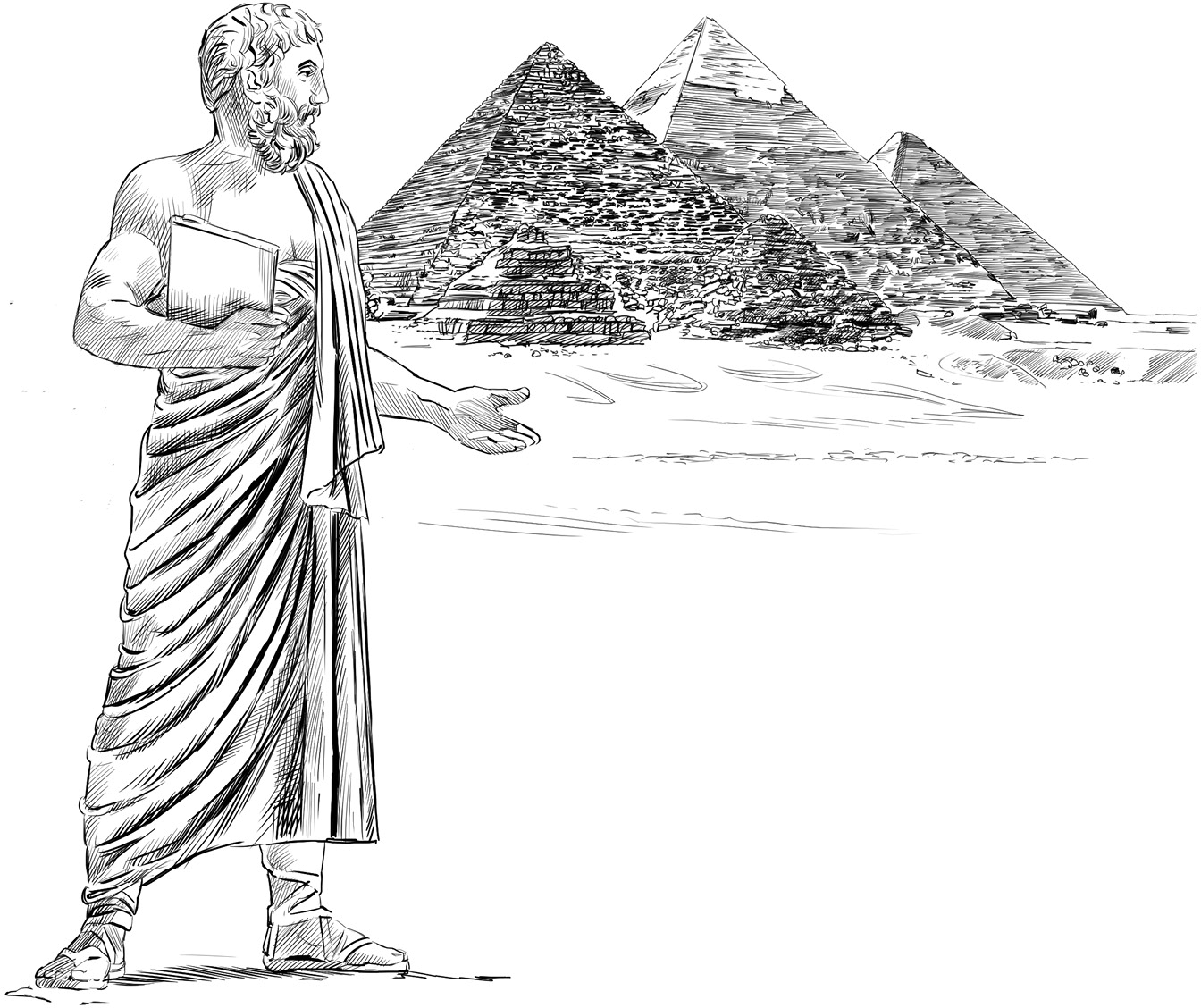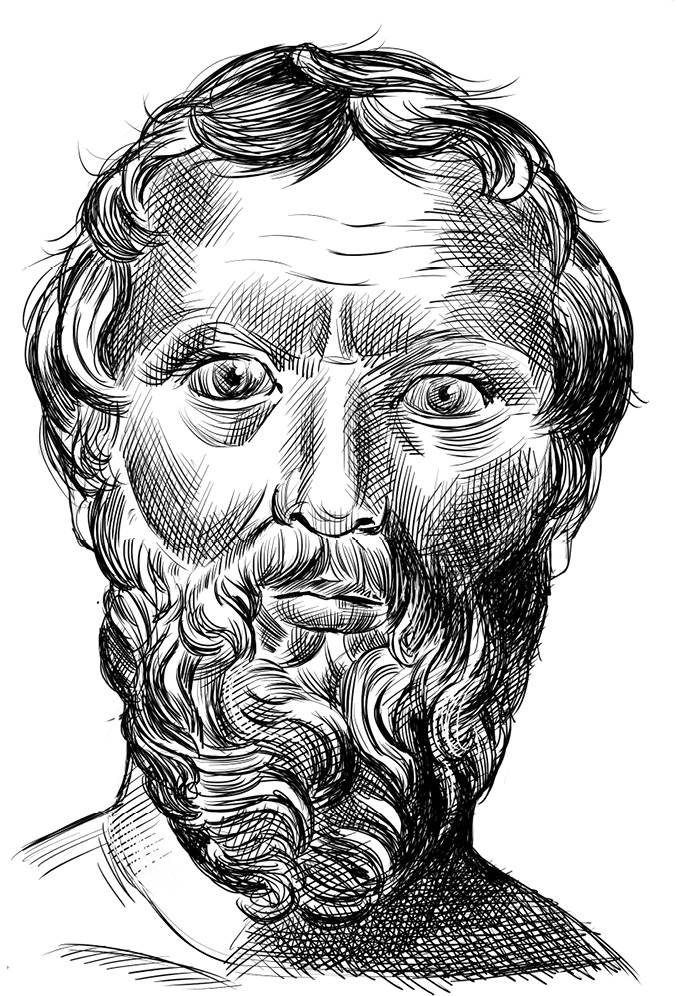Penguin supports copyright. Copyright fuels creativity, encourages diverse voices, promotes free speech, and creates a vibrant culture. Thank you for buying an authorized edition of this book and for complying with copyright laws by not reproducing, scanning, or distributing any part of it in any form without permission. You are supporting writers and allowing Penguin to continue to publish books for every reader.
Text copyright 2015 by Dorothy Hoobler and Thomas Hoobler. Illustrations copyright 2015 by Penguin Random House LLC. All rights reserved. Published by Grosset & Dunlap, an imprint of Penguin Random House LLC, 345 Hudson Street, New York, New York 10014. GROSSET & DUNLAP is a trademark of Penguin Random House LLC. Printed in the USA.
Where Are the Great Pyramids?
The Great Pyramids of Egypt are the most famous buildings in the world. They stand outside Cairo, the capital and biggest city in Egypt. Almost everybody has seen a picture of them. They are also among the worlds largest buildings, the oldest buildings still standing, and the most closely studied buildings. In ancient times, they were one of the Seven Wonders of the World.
The Seven Wonders of the Ancient World
Greek tourists of the first and second centuries BC could buy guidebooks that listed spectacular places to visit. Seven of these became known as the Seven Wonders of the World. Besides the Great Pyramids, they are:
1) The Hanging Gardens of Babylon . The king of the Babylonian Empire married a woman from a land where many trees and plants grew. She became homesick. To please her, the king had fabulous gardens built on terraces.
2) The Temple of Artemis at Ephesus . The king of Lydia, known for his great wealth, had a beautiful temple built at Ephesus, a city in modern-day Turkey.
3) The Statue of Zeus at Olympia . This gigantic statue was covered with ivory, gold, and precious stones.
4) The Mausoleum at Halicarnassus . Mausolus, a wealthy governor in the Persian Empire, ordered a fabulous tomb built for himself and his wife. Today, the word mausoleum is used to mean any large tomb.
5) The Colossus of Rhodes . To celebrate winning a war, the people of Rhodes built an enormous statue of the sun god Helios in their harbor.
6) The Lighthouse of Alexandria . The successor to Alexander the Great built a huge lighthouse in the harbor of this Egyptian city to guide ships in the Mediterranean.
Today, all of those wonders have disappearedexcept the pyramids.
The pyramids were not built for people to live in. They were tombs for the pharaohs, the rulers of Egypt. Pharaohs were the link between the Egyptian people and their gods. In fact, the pharaohs themselves were regarded as gods. Whatever the pharaohs wished people to do, it was done. Thus, when pharaohs commanded thousands of people to work for many years to build their tombs, they did it.
There are more than one hundred pyramids still standing in Egypt. But many of them are little more than heaps of rubble. The three largest are known as the Great Pyramids. The oldest of the three was built about 4,500 years ago.
The ancient Egyptians believed the pharaoh would live in another world after death. Thats why it was important to preserve his body and place it somewhere safelike inside a pyramid.
In an elaborate process, the body was turned into a mummy. It was dried, preserved, and wrapped in linen bands before being placed in a sarcophagus, or coffin. The pharaohs servants put food, jewelry, furniture, and many treasures in the pyramid with him.
The pharaohs wanted to make sure their tombs were not disturbed. So the pyramid builders carefully hid the passages that led to the pharaohs burial chamber. They set traps for anyone who tried to break in. Even so, tomb robbers managed to get inside and steal treasures.
Over the centuries, Egypt declined. But the Great Pyramids remained. When later visitors arrived, they were astonished by what they saw. No one had seen anything like the pyramids. A Greek known as Herodotus arrived in Egypt in the fifth century BC. The pyramids were already thousands of years old then. Like so many others, he asked, Who could have built these pyramids? How did they do it?
Today, scientists still seeking the answers to such questions. We know more about Egypt than Herodotus did, yet unsolved mysteries remain. Todays scientists are making new discoveries, but the pyramids still hold many secrets.
Herodotus
The Greek historian Herodotus was born around 480 BC. He was the first European traveler to visit and write about Egypt. He called its wonders more in number than any other land. Herodotus described the process of mummification (preserving bodies), which was still being done when he visited. He also described how the pyramids were built, but modern scientists think some of what he wrote isnt true. It had been a very long time since anyone had actually built one.
He was most accurate when he wrote about the life of the Egyptian people. He was shocked at how different they were from the Greeks. The Egyptians appear to have reversed the ordinary practices of mankind, he wrote. Women attend markets and are employed in trade, while men stay at home and do the weaving! Men in Egypt carry loads on their heads, women on their shoulders. Women pass water standing up, men sitting down.
Herodotus wrote everything he could find out about the history of the countries he passed through. Today he is known as the Father of History.

